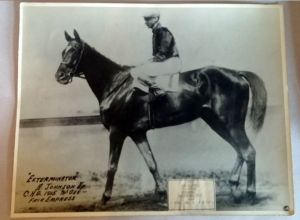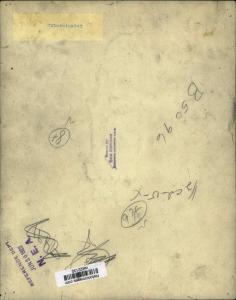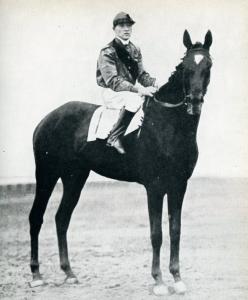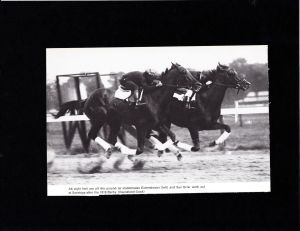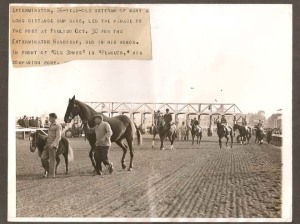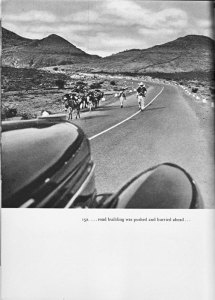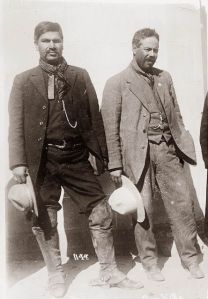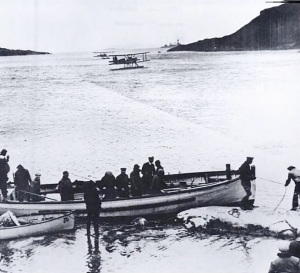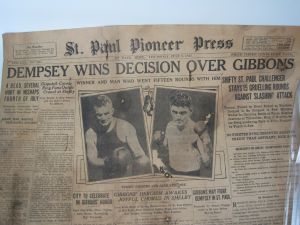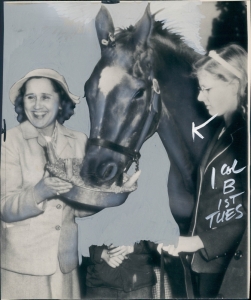Using history as a guide, if I was shopping for a potential champion, I’d be looking for an “ugly duckling.”

NORTHERN DANCER by Brewer, Jr. The colt was royally bred, but so tiny that E.P. Taylor failed to sell him as a yearling. In fact, potential buyers laughed when he was paraded out with the other yearlings!
Of course, none of the thoroughbreds discussed in this article were ugly. Not literally. But metaphorically, there was something about each one of them that hearkens back to Hans Christian Andersen’s fairy tale: they seemed to be ugly ducklings but what no-one saw at the time was that they were not ducklings at all. Some weren’t good-looking enough. Others took too much time to come into their own. And still others were waiting for a special someone to come along, someone who looked into their eyes and saw who they really were.
The individuals whose stories appear here are only the proverbial “tip of the iceberg” — VAULT readers will certainly be able to name many others who fall into this category.
And it all adds up to this: If there’s any “secret” to finding yourself another Frankel or American Pharoah or Black Caviar or Treve, it has to do with looking “under the feathers.”
“UGLY DUCKLINGS” #1: TOO UGLY TO EVER BE A CHAMPION
Perhaps we can’t help it. Horses are beautiful animals and thoroughbreds can be exquisite. And no matter how often horse folk remind us that beauty and talent don’t necessarily go hand in hand, it’s all too easy to ignore when you’ve got a plain bay standing next to a magnificent chestnut…….
KINCSEM (filly, 1874-1887)
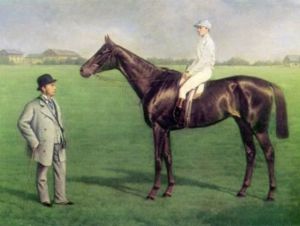
This lovely print of KINCSEM shows off her lustrous liver-chestnut coat, massive chest and powerful hindquarters. But it was painted in hindsight, when the world already had learned that she was incomparable, making one doubt its absolute accuracy.
She may well have been the greatest thoroughbred of them all, winning 54 times in as many starts on two different continents. Kincsem took on all comers and was so devastatingly good that she also ran in 6 walkovers when no-one would run against her.
But at her birth, she was declared by her owner-breeder, Ernest Von Blaskovich, to be the ugliest foal that he had ever seen — and most agreed with him. When Von Blaskovich offered the majority of that year’s crop of foals to Baron Orczy, the latter purchased all but two — and one of the rejects was Kincsem.
Here is one fairly accurate description of a thoroughbred that was so brilliant she actually paused to graze before taking off after the others, only to win going away:
“She was as long as a boat and as lean as a hungry leopard … she had a U-neck and mule ears and enough daylight under her sixteen hands to flood a sunset … she had a tail like a badly-used mop … she was lazy, gangly, shiftless … she was a daisy-eating, scenery-loving, sleepy-eyed and slightly pot-bellied hussy …” (Beckwith in “Step And Go Together”)
As a broodmare, Kincsem was pretty decent, although she never duplicated herself. But through one of her daughters, she comes down to us today in the bloodlines of Coolmore’s fine colt, Camelot. In her native Hungary, Kincsem is a national hero and a film based on her life (although it appears that the mare isn’t its central protagonist) is due for release in 2016.
For more on this remarkable thoroughbred:
And on the film:
IMP (filly, 1894-1909)

IMP in 1898, going to post at Hawthorne Race Track.
She was the 1899 HOTY and twice won the honours for Champion Handicap Mare (1899 & 1900). She had her own theme song (below): “My Coal Black Lady.” And she was inducted into the Racing Hall of Fame in 1965.
But when she came into the world, the tiny daughter of Fondling (1886) by the stallion, Wagner (1882) was looked upon poorly by her owner-breeder because she wasn’t pretty and her conformation showed not the slightest hint of promise. But her owner-breeder, D.R. Harness of Chillicothe, Ohio kept her anyway, perhaps because the fact she was bred in the purple overrode his misgivings. Her ancestry included direct descent from the Darley Arabian, Eclipse and Lexington.
Imp raced an unthinkable number of times: 171. But she won 62 times, with 35 seconds and 29 thirds and raced more against the boys than those of her own sex. She set track records from 1 3/4 to 1 1/16.
By the time she was retired, at the age of eight, she was a national figure.
For more about Imp:
PHAR LAP (gelding, 1926 – 1932)
“Bobby” as he was called by those closest to him, arrived in the stable of trainer Harry Telford looking like a very, very sorry excuse for a racehorse. Which, in turn, precipitated the first crisis in Phar Lap’s biography, unbeknownst to the scrawny, dishevelled colt who had been born in New Zealand and was a son of the promising sire, Night Raid. Trainer Telford had bought Bobby for owner, David J. Davis, who rushed over excitedly to see his latest acquisition. After a moment of silence, Davis went ballistic. The compromise was that Bobby would be leased to Telford for a period of three years, the trainer covering all costs and the owner getting one third of the colt’s earnings. Assuming he could run.
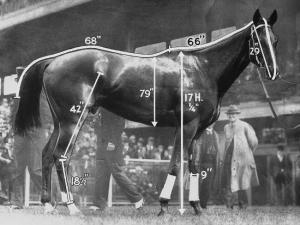
How big was PHAR LAP? Have a look at these figures! Photo and copyright, Victoria Racing Museum, Australia.
The rest, as they say, is history: Bobby aka The Red Terror aka Phar Lap (meaning “lightning/bolt of lightning/lights up the sky” in the Thai language) was a champion. His great heart, together with his victories, moved Australia and New Zealand — and the racing world– to fall in love. And, in 2016, we are still in love with him:
Bobby’s risky run @ The Melbourne Cup in 1930 should have been a movie:
WAR ADMIRAL ( colt, 1934-1959)
“Sons of Man O’ War ought to look different,” Mr. Riddle decided, as he looked at Brushup’s new foal. It was a bay colt with no real pizzazz to it …. and it was tiny. Riddle found it impossible to hope for much from the little fellow, who much-resembled his dam. And Brushup had been hopeless as a runner, pretty as she was. Riddle tried, in vain, to hand the colt over to his partner, Walter Jeffords Sr., but when Jeffords refused, it was decided that Brushup’s boy would stay in the Riddle stable until he showed what, if anything, he had as a runner.
![War Admiral [2006 Calendar, Nov]](https://thevaulthorseracing.files.wordpress.com/2016/01/war-admiral-2006-calendar-nov.jpg?w=300&h=234)
By the time he was a three year-old, Riddle had learned that even though The Admiral was the size of a pony (15.2h) he did, indeed, carry his sire’s blood.
And that blood would show in not only in War Admiral’s Triple Crown, but also in the breeding shed. As a sire, his contribution to the breed was as definitive as was the impact of sons and daughters like Busanda, Busher, Bee Mac, Searching, War Jeep and Blue Peter on the sport itself. War Admiral led the general sire list in 1945, the 2 year-old sire list in 1948 and the broodmare sire list in 1962 and again in 1964.
Although The Admiral’s sons were not influential as sires, both Busanda and Searching made a huge impact. Their descendants include the likes of Swaps, Buckpasser, Numbered Account, Iron Liege, Hoist the Flag, Gun Bow, Striking and Crafty Admiral, as well as two Triple Crown winners, Seattle Slew and Affirmed. Other descendants of note from the War Admiral line include Dr. Fager, Alysheba, Cigar and, most recently, Zenyatta.
To this day, breeders point with pride to War Admiral in the lineage of their thoroughbreds. What the name connotes is timeless, synonymous with the very essence of the thoroughbred.
For more on War Admiral:
WAR ADMIRAL: THE LITTLE HORSE WHO COULD — AND DID! (for John Shirreffs)
ZENYATTA (filly, 2004)
As the tale is now famously told, the yearling daughter of Street Cry did not look her best in the sales ring as a yearling, due largely to a case of ringworm. But David Ingordo could see beyond all that. And Ann Moss has recounted how she and the filly seemed to “just click” at first meeting at Keeneland, just as though Zenyatta had chosen her.
When the hammer fell, the filly had been acquired by the Mosses. But she was not their only purchase that year and shortly after their yearlings arrived at Mayberry Farm, they received a call from Jeanne Mayberry. Jeanne had this to say,”Either you bought yourselves some very slow yearlings or else that Street Cry filly is very, very good. Because when they’re out together running, she leaves them all behind as though they aren’t even moving.”
Prophetic words.
But fast as Zenny was, it took time and patience to “get her right,” as the Mosses’ Racing Manager, Dottie Ingordo Sherriffs, has said. But when trainer, John Sherriffs, did get her right, the result was the birth of an American racing legend:
Retired with a record of 19 wins and 1 second place in 20 starts, Zenyatta’s fans have not diminished in the slightest. At this writing, Zenyatta is the only filly/mare to have ever won two different Breeders’ Cup races and the only filly/mare to ever have won the BC Classic.
“UGLY DUCKLINGS” #2: STANDING IN THE SHADOWS
In any institution, whether a school or a sport like horse racing, it works out a lot better if everyone develops in the same, linear way. Couple that with our love affair with speed — intelligence being linked to quickness and, in the case of thoroughbreds, ability with running fast enough to win, preferably at two — and you have the “cracks” through which genius and greatness all-too-frequently slip ……..
EXTERMINATOR (gelding, 1915 -1945)
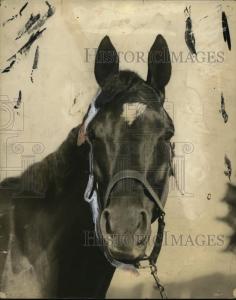
EXTERMINATOR. Copyright The Estate of Bob Dorman.
The story of “Old Bones” is famous. He’s as legendary a figure in American thoroughbred racing as Man O’ War — and some say he was the best of them all. High praise for a big, coarse gelding who was bought as a rabbity for a flashy colt named Sun Briar, the hope of Willis Sharpe Kilmer for the 1918 Kentucky Derby.
The man who first saw under the surface of the lanky chestnut with the deep, dark eyes was trainer Henry McDaniel. It was he who studied Bones and Sun Briar as they worked, noting the intelligence of the former at dealing with his moody running mate. And when Sun Briar couldn’t run in the Derby — and after considerable lobbying by McDaniel and Colonel Matt Winn, the President of Churchill Downs — Kilmer agreed to let the ugliest of his horses run instead. And so it was that Exterminator stepped on to a muddy track and transformed, in three minutes, from an ugly duckling to a Swan King.
To read more about Exterminator: https://thevaulthorseracing.wordpress.com/2016/01/07/a-collectors-mystery-exterminator-and-bob-dorman/
DISCOVERY (colt, 1931- 1958)

DISCOVERY on the track. Photo and copyright, The Chicago Tribune.
The son of Display had a brilliant, dazzling chestnut coat and lots of chrome. Born at Walter J. Salmon’s Mereworth Farm and owned by Adolphe Pons, the colt was impressively bred and ran head-first into the accompanying expectations. Predictably, he disappointed, winning only 2 of 13 starts as a two year-old.
At three he appeared again, looking fit enough. However, among the 3 year-olds that year was a colt named Cavalcade, who had already beaten Discovery the year before. In the Derby, Discovery chased Cavalcade home; in the Preakness, he finished third to High Quest and Cavalcade.
But Discovery was just getting going. He went on that same year to win the Brooklyn and Whitney Handicaps, and then set a world record time for 1 3/16 miles in the Rhode Island Handicap.
But his finest years were at four and five. In 1935, the colt won 11 of 19 starts, carrying an average of 131 lbs., gaining him the nickname “The Iron Horse.” Retrospectively named 1935 Horse of the Year (over Triple Crown winner, Omaha) and throughout 1936, Discovery’s winning ways continued. Of his Whitney win, the New York Times wrote that the chestnut ran “…the most decisive victory to be scored in a big American stake in many years.”

DISCOVERY was named Horse of the Year for 1935. Photo and copyright, The Chicago Tribune.
As a sire, it was Discovery’s daughters who gave him purchase on immortality, producing the great Native Dancer, Bold Ruler and Bed O’ Roses.
SEABISCUIT (colt, 1933-1947)
Rejected outright as a colt foal because of his size and conformation, the little son of Hard Tack languished as a runner until he hooked up with trainer Tom Smith, who could see right through the disguise. In Smith’s hands, “The Biscuit” blossomed into a horse with fire in his blood. It was the Depression Era: a good time for a hero to come along. Especially one who had once been “not good enough,” through no fault of his own. He battled back from defeat. He battled back from injury. And he taught America how to look a setback straight in the eye — and vanquish it.
Enjoy this rare footage of The Biscuit at work and play:
RED RUM (gelding, 1965- 1995)
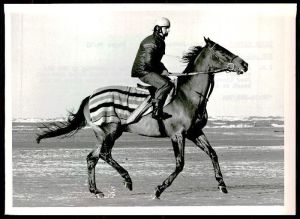
RED RUM at work on the sands of Southport, England. Photo and copyright, The Baltimore Sun
“Beloved” is probably the first response when someone speaks his name. Or “Immortal.” Something like that.
In its long, distinguished history the National Hunt has known many great horses, but none who rose to the standard of Red Rum. He was, quite simply, the greatest steeplechaser who ever lived.
By the time Donald “Ginger” McCain got his hands on the bay gelding, he had won a few one-mile races over the flat before being passed from one training yard to another. The horse who had descended from the great St. Simon, and whose name originated from the last three letters of his dam (Mared) and sire (Quorum) was never going to amount to much, running in cheap races with modest purses.
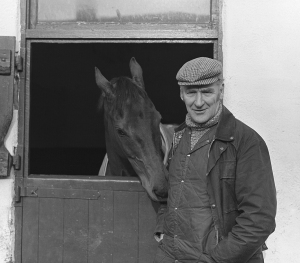
Ginger McCain with RED RUM, pictured at his stables behind his used car dealership in Southport, 1975. Photo and copyright, George Selwyn.
The first thing that McCain set out to do was to rehabilitate the gelding, who suffered from the incurable disease, pedal osteitis, a disease of the pedal bone. (This was discovered after the trainer paid a goodly sum for “Rummy” on behalf of owner, Noel le Mare.) The “cure” was swimming and long works on the beaches of Southport. And it worked miracles. Red Rum blossomed into a tough, rugged individual. (It should be noted that Ginger adored Rummy and the horse was never put at-risk in any of his races, unlike the situation when he was running on the flat.)
The result was not one, but three, wins in the Aintree Grand National, arguably the greatest test of any horse’s courage and stamina in the world. His first win came at a time when the Grand National was flirting with extinction. It needed a hero and it got one, in the form of a thoroughbred once-destined to run on the flat until he could run no more, and a used car salesman who “also” trained National Hunt horses — and saw something quite different in his Champion’s eye:
JOHN HENRY (gelding, 1975-2007)
“For the first two years of his life, John Henry had been peddled like a cheap wristwatch.” (Steve Haskin, in John Henry in the Thoroughbred Legends series)
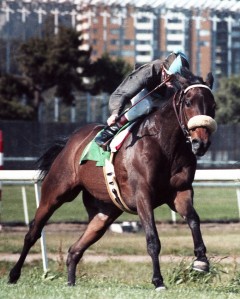
JOHN HENRY at work.
To say he was “difficult” doesn’t even come close: for what ever reason, John had a nasty disposition, despite his workmanlike performances on the track. It would take trainers (and there were many) like Phil Amato and Ron McNally to work their way around temperament issues to gain the gelding’s trust before the John Henry we now know and admire emerged.
In his 3 year-old season, there were glimmers of ability. But from 1980 to his final win, at the ripe old age of nine, John Henry turned out to be the stuff of greatness. And not only was it his “arrival” as a turf star: John’s rags-to-riches story captivated fans who even today, almost nine years after his death, still revere his memory. Indeed, for many, John Henry is one of a pantheon of superstars, right up there with Exterminator, Man O’ War, Secretariat, Ruffian and American Pharoah.
By the time he was retired to the Kentucky Horse Park in Lexington, John had twice won the Eclipse Award for Horse of the Year (1981, 1984), with 39 wins in 83 starts and earnings of over six million dollars USD. His 1981 election as Horse of the Year was unanimous and at the time, unprecedented for a nominee to receive all votes cast. In addition, John was inducted into the American Horse Racing Hall of Fame in 1990.
ISTABRAQ (gelding, 1992)
Unlike John Henry (above), whose bloodlines were blue collar, Istabraq came from a royal line: a son of Sadler’s Wells (Northern Dancer) whose dam, Betty’s Secret, was a daughter of Secretariat. Owned by E.P. Taylor, the Canadian thoroughbred breeder and owner of Northern Dancer, Betty’s Secret was sent to Ireland in 1987 to be bred to some of Northern Dancer’s British sons. Taylor died two years later and the mare, in foal to Sadler’s Wells was purchased by Hamdan Al Maktoum.
The foal she was carrying was Istabraq.

ISTABRAQ as a foal with his dam, Betty’s Secret (Secretariat).
The colt foal seemed to understand from the very beginning that he was “someone special.” And indeed he was destined to be — but it took time.
The colt’s name was Sindhi for “brocade” but the weave of him proved inferior on the flat, where he managed only 2 wins. His jockey, the great Willie Carson, described the youngster as a “slow learner” who “…also lacked speed and was not at home on fast ground…I came to the conclusion that the reason he was struggling was because he had no speed. In fact, he was one-paced…”
As a three year-old, he developed foot problems. He was, in fact, flat-footed, making shoeing him a problem. When Istabraq refused to quicken in his last race as a three year-old, despite Carson’s aggressive ride, Sheikh Hamdan let trainer John Gosden know that it was enough: Istabraq was to be sold.

John Durkan started his career as a jockey before becoming an assistant trainer to the great John Gosden.
When John Durkan, Gosden’s assistant trainer, heard that Istabraq would be listed in the 1995 Tattersall’s sale he resolved to acquire him. He saw possibilities for Istabraq, but not on the flat — as a hurdler. Having informed Gosden that he would be leaving to go out on his own, Durkan began searching for a possible buyer for Istabraq and found one in J. P. McManus, a wealthy Irishman who had made a fortune as a gambler. Following the sale at Tattersall’s, McManus shipped Istabraq back to Ireland with the understanding that the colt would be trained by Durkan. In his young trainer, Istabraq had found someone who believed in him.
“He is no soft flat horse. He is the sort who does not get going until he’s in a battle. He has more guts than class and that’s what you need, ” Durkan told McManus, “He will win next year’s Sun Alliance Hurdle.” Prophetic words.

“He is no soft flat horse…” Durkan counselled J. P. McManus. And you see it here, in the power as ISTABRAQ launches, even though he’s a good distance from the hurdle.
But the young Durkan would soon be beset with tragedy, although not before watching his beloved gelding take ten hurdle races in a row from 1996-1997. Durkan was battling cancer and was shipped to Sloane Kettering Hospital in New York City; Aidan O’Brien took over training duties. By 1998, John was dying and moved home to Ireland, succumbing on the night of January 21, 1998.
Charlie Swan wore a black armband in John’s memory on the day of Istabraq’s first start in 1998, the AIG Europe Champion Hurdle. The gelding, who was now 6 years old, was a national hero and thousands turned out to watch him begin his 6 year-old season in grand style at Leopardstown:
And then this gallant thoroughbred just went on and on and on, beginning with a win two months later at Cheltenham in what would be the first of three wins in the Champion Hurdle:
Retired in 2002, Istabraq is now in the fourteenth year of a happy retirement at his owner, J.P. McManus’ Martinstown Stud. There, the horse who was voted in 2009 the favourite of the last 25 years by the Irish people, hangs out with his BFF, Risk of Thunder, and continues to greet fans who visit from all over the world:
For more about Istabraq, one of Secretariat’s greatest descendants: https://thevaulthorseracing.wordpress.com/2011/02/23/secretariats-heart-the-story-of-istabraq/
*********************************************************************************************************************************************************************************************
NOTE: THE VAULT is a non-profit website. (Any advertising that appears on THE VAULT is placed there by WordPress and the profit, if any, goes to WordPress.) We make every effort to honour copyright for the photographs used in our articles. It is not our policy to use the property of any photographer without his/her permission, although the task of sourcing photographs is hugely compromised by the social media, where many photographs prove impossible to trace. Please do not hesitate to contact THE VAULT regarding any copyright concerns. Thank you.
************************************************************************************************************************************************************************************************
Together,we saved over 20 horses from going to slaughter in Canada or Mexico in 2015. And every donation counted in this effort because no donation is too small. Hale, Trendy Cielo, Maya Littlebear, Felicitas Witness and 16 others, including two mares and their foals, thank you.
Please consider making a donation to a worthy cause so that we can help more rescue efforts in 2016.
Thank you.
https://www.gofundme.com/8d2cher4
